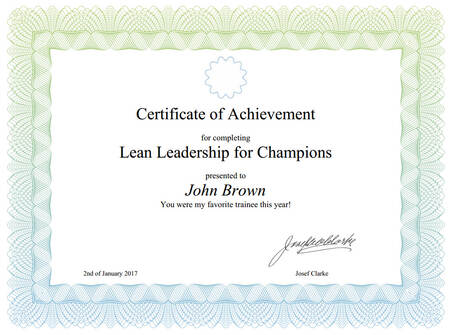by Michiel Klønhammer, founder of LearningStone
A large percentage of courses in the professional training world is given in one single day, or perhaps in two halves. Why? Most trainers will tell you that this is all they can manage to sell to their clients: neatly packaged courses, clear pricing and an easily repeatable – though somewhat boring – business.

Years of scientific research have consistently shown that spacing learning over time has enormous benefits. My colleague at LearningStone, co-founder Sjoerd studied at an Agricultural University and likes to refer to Spaced Learning, (together with Just in Time Learning and Micro Learning) as drip feeding: the art of feeding and hydrating (plants) with small amounts over an extended period of time instead of all at once. We have lengthy discussions about this as it’s not a very exact metaphor. These approaches to learning don’t imply that learning have to be evenly spaced at all, but it does give you a good feel for the difference between all-in-one-go training and some form of spaced learning. A lot of these scenarios fare well with a blended learning approach.
Why does spacing work?
It was the famous Wil Thalheimer who summarized the explanations that scientists offer for the benefits for spaced learning*.
1. Spacing requires more cognitive effort, resulting in better long-term memory
2. Spacing causes more varied ways of storing information which helps when you need to retrieve it later.
3. Spacing causes learners to forget more, stimulating them to use different memorizing strategies, resulting in better long-term memory.
* the translation into layman’s English is mine, so any mistakes are too.
Spacing doesn’t always work
But spacing doesn’t always work, you might say. Actually, you’re right. I learnt that from my 18 year old son Laszlo. As a fanatical gamer, he had some tough years at school as he never spaced his school learning very well (though he acquired a lot of invaluable skills online). In the end he did learn how to space learning – he now has amazing grades – but he also figured out when NOT to space learning. Whenever you are working towards a test, you might consider another strategy. You might choose a non-spaced strategy often called “cramming” and science shows that – in combination with a little bit of spacing – this actually works better than spacing.
But passing a test is often not the primary goal in professional training, or at least it shouldn’t be! And in no way does this insight let you off the hook: a one-day training can be great for introductions and as marketing, but usually isn’t the best choice for actual learning.
Spacing needs variation
My other son, Jim offers a great illustration of an important design rule for spaced learning. Jim doesn’t love arithmetic (to say the least) and his school has given him daily computer-based lessons to do at home. As the lessons are gamified, he prefers them to anything on paper but still he gets bored. You can’t blame him: humans are programmed to ignore repeating patterns, so if you’re doing 50 to 100 sums a day, your mind will shut down and resentment will grow. Better would be to use different learning approaches all the time. A bit of applied arithmetic, a bit of gaming, a bit of paper work and all that spread over time. And, if done right, blended training gives you lots of opportunities to provide different forms of learning, spaced over time.
Test your Spaced Learning Level
So, science shows us that spacing your learning is a good idea. Assuming we agree on that, you can now test yourself on your level of spaced learning.
Level 0: You think Space Learning is something for astronauts
You provide a course that has you doing all the talking and your trainees doing all the listening. You have divided the day or afternoon into blocks. Each block is a different subject. You really don’t like drip feeding!
Level 1: You provide one day training with spaced learning moments
Even if you do only have the one day, you can still incorporate forms of spacing and repetition into your training. Start by introducing a concept with it’s details, then let learners work with the concept, repeat it in different forms, summarize it etc.
Level 2. You provide Multiday training
If you do have more time, don’t do one day straight after the other but spread the days and space the learning across the days.
Level 3. You offer Blended Learning Light
Introduce and repeat your learning material before, during, between and after the face-to-face training. This is where you can flip the training (move passive and individual activity out of the classroom) and offer exercises between classes.
Level 4: You are a Spaced Blended Learning specialist
Now you are using your platform as the core guideline for you training and have equal attention to online and offline learning. You have a long-term strategy (maybe a learning community for a full year) and make sure content is repeated.
Now what?
Moving from one off training courses to spaced learning is not something you do overnight. Practicalities such as the amount of spacing that your client will accept can’t be ignored. If you can’t sell it, you won’t be able to provide it. Often your client will understand the benefits of a spaced learning strategy and if you balance face-to-face and online training components well, you should be able to come up with an interesting proposition. If you can convince your client that a long term, spaced strategy can be effectively managed with a blended approach, you’re not only doing the learner a service. Your relationship with your client will move away from one-time (boring) training days, towards a long time valuable relationship. Drip feed your trainees now!


